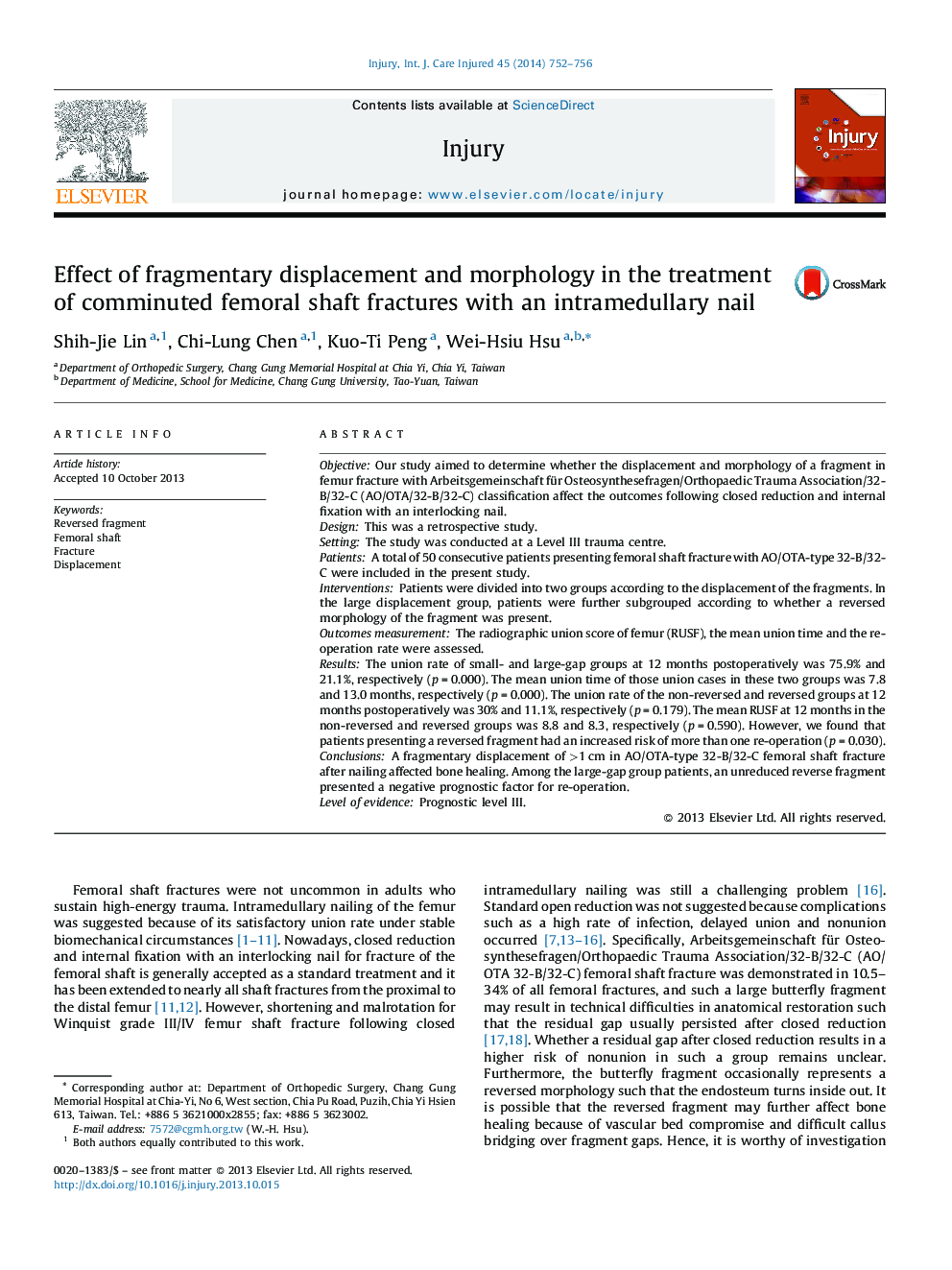| Article ID | Journal | Published Year | Pages | File Type |
|---|---|---|---|---|
| 3239485 | Injury | 2014 | 5 Pages |
ObjectiveOur study aimed to determine whether the displacement and morphology of a fragment in femur fracture with Arbeitsgemeinschaft für Osteosynthesefragen/Orthopaedic Trauma Association/32-B/32-C (AO/OTA/32-B/32-C) classification affect the outcomes following closed reduction and internal fixation with an interlocking nail.DesignThis was a retrospective study.SettingThe study was conducted at a Level III trauma centre.PatientsA total of 50 consecutive patients presenting femoral shaft fracture with AO/OTA-type 32-B/32-C were included in the present study.InterventionsPatients were divided into two groups according to the displacement of the fragments. In the large displacement group, patients were further subgrouped according to whether a reversed morphology of the fragment was present.Outcomes measurementThe radiographic union score of femur (RUSF), the mean union time and the re-operation rate were assessed.ResultsThe union rate of small- and large-gap groups at 12 months postoperatively was 75.9% and 21.1%, respectively (p = 0.000). The mean union time of those union cases in these two groups was 7.8 and 13.0 months, respectively (p = 0.000). The union rate of the non-reversed and reversed groups at 12 months postoperatively was 30% and 11.1%, respectively (p = 0.179). The mean RUSF at 12 months in the non-reversed and reversed groups was 8.8 and 8.3, respectively (p = 0.590). However, we found that patients presenting a reversed fragment had an increased risk of more than one re-operation (p = 0.030).ConclusionsA fragmentary displacement of >1 cm in AO/OTA-type 32-B/32-C femoral shaft fracture after nailing affected bone healing. Among the large-gap group patients, an unreduced reverse fragment presented a negative prognostic factor for re-operation.Level of evidencePrognostic level III.
